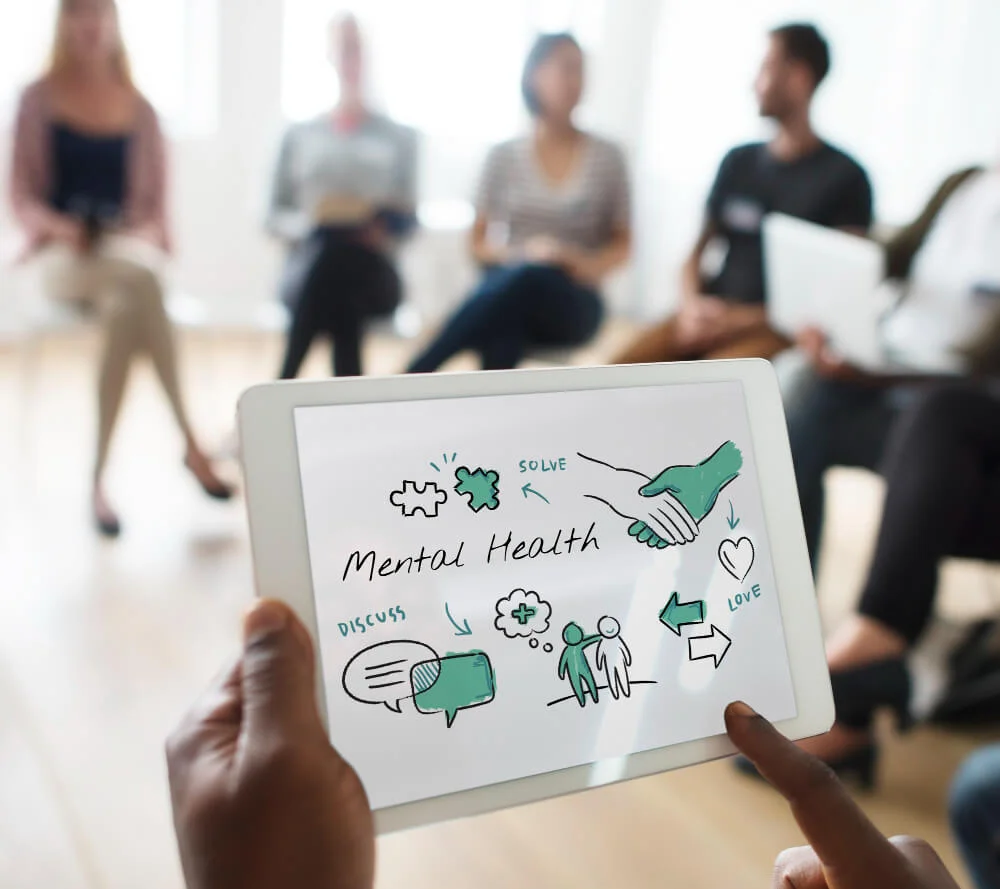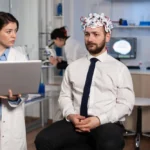What Does Mental Agility Look Like?
The turbulent environment of constant change and complexity has made mental agility an essential hub for success. Consider a basketball player who, in the chaos of an extremely high-stakes game with only seconds left on the clock, quickly pivots, evaluates his options and then makes a quick and successful pass. This is not simply physical skill; it is a prime illustration of how the human brain best works. So what does it mean to be mentally agile and how can someone develop such a skill?
Mental agility is not only about speed of thought but the capacity to think on one’s feet; it is creativity, resourcefulness and innovation all rolled into one. In a universe where the one true constant is change, all of us–both in and outside of organizations–are having to handle more multifaceted and intricate challenges. The ability to quickly think and adapt is the difference between progress and paralysis. But how can really get deep into the complexities of mental agility? What are some examples of this concept that you can see happening in real life?
But scratch the surface a little and you will find that mental agility is not only reserved for sports or business leadership. It spreads over different areas — such as how students confront academic struggles, how professionals deal with unexpected challenges and how individuals handle personal relationships. In this article, we share some inspiring mental agility examples with the hope to emphasize on how we can use them in real-life scenarios.
Everybody loves competing with each other and there is no better way to sharpen your mental aptitude than arguing. Whether on the journey to self-improvement or career success, out in the battlefield trying to make sense of chaos: understanding this principle may just be THE KEY you need for reaching your ultimate limit. What if you had the capacity to look at challenges in a different light, to reel from setbacks gracefully and be more creative than ever?
Mental Agility in Sports
One of the clearest examples of mental agility comes in the world of sports. Athletes operate in high stress environments where everything they do can amount to a win or loss. A last minute shot, to remain faithful to the above example, of a football player at the end of a match. There is also the very real prospect of surrounded by defenders, should said player pass, shoot or dribble. That kind of snap judgement belongs to the world mental agility. It demonstrates not only the physical skill of athletes but also expert environmental cognition and real-time strategy development.
It is not only about the solo performance of an athlete that makes mental agility in sports significant. In addition, team dynamics have a lot to do with swift adjustments. The best coaches learn how to adjust their game plans on the fly, based opponents strengths and weaknesses. This is an imperative for organizations to stay competitive, and also emphasizes the need for mental agility across all walks of life.

Example: Michael Jordan (of course)
Think about some of the basketball greats, such as Michael Jordan. No one reads the game, anticipates moves pieces and adjusts on-the-fly like Barça’s chief… which is quality mental agility. In so many of those critical moments in playoff games, Jordan let his feel for the moment and instant improvisational genius guide him to shots that would win the game. He was mentally quick, able to perform in a crunch and spin disaster into triumph.
Mental Agility in Business
And in the corporate world, cognitive flexibility is just as important. This is one of the traits that makes leaders with this skill light on their feet and able to make strategy shifts and react instantaneously to market moves. Imagine a CEO deciding between holding onto existing business models and the embrace of disruptors. The difference between being able to assess risks, predict consequences, and rapidly determine an outcome can make or break a business.
In addition, mental agility is at a premium in crises. The companies that can pivot more easily in the face of continued disruptions, be it a sub-optimal economic reality or the ongoing effects of a global pandemic, tend to improve their competitive position. Examples of mental agility included businesses that retrained employees to work remotely and deliver digital services during the COVID-19 pandemic. They were able to see the writing on the wall, and they quickly moved to adapt—saving themselves from extinction in a changing world.
Example: Satya Nadella in the Real World
An exemplary illustration in the corporate world is Satya Nadella, CEO of Microsoft. During his tenure at the company, it moved from a classic software manufacturer to one of the largest cloud computing companies in the world. Microsoft’s misstepsNadella has shown he can read the technology tea leaves and change Microsoft accordingly. The pivot breathed new life into the company, reestablishing it as a tech pioneer.
Mental Agility in Education
Certainly in learning and problem solving, it appears as mental agility in more educational sense. Or a student who sees a tough math problem and starts flailing. However, the mentally-lithe student will modify what they are doing, trying something new or turning to a buddy for help. This adjusts their growth mindset which is a necessity for lifelong learning.
Moreover, educators can promote mental dexterity by fostering critical reflection and versatility within the classroom. Teachers can foster this essential skill by giving students difficult problems to solve in new ways. Being able to adapt the way that we engage with academic tasks can massively effect our results and how confident we feel in ourselves.
Example: Adaptive Learning Techniques In Real Life
In educational terms, a practical demonstration of how schools are having to be more mentally nimble can be seen in those using adaptive learning technologies. Based on the weakness and strengths of an individual student, these platforms adjust their curriculum. Allowing for personalized learning paths empowers instructors to build a space where students learn to adjust their learning methods on the fly, based on live feedback.
Reflecting on Personal Relationships and Mental Agility
Personal relationships, too with mental agility.setLayoutManager 2017. Being able to change their message depending on an individual’s state is a necessary side effect of highly effective communication. This can mean shifting from a confrontational stance to an empathetic one in a conflict over dinner; it also promotes understanding and reduces tension.
In addition, people with relationship mental agility are able to deal with conflict better. They understand compromise and have flexible perspectives to meet in the middle. This versatility, in turn, not only solidifies human connections but also supports the root of emotional intelligence that besides is a cornerstone for a healthy relations.
Example from Real Life – Delivering Conflict Resolution
The Appeal of a DiscordThink about a couple arguing. Logical flexibility A partner will show rationale adaptability on the off chance that they state their emotions from the outset yet when their accomplice answers with feeling, they change strategies right away. Most quarrels can be avoided, and others turned into productive dialogues that bond the two closer together by paying attention to signals and tweaking one communication style.
Ways to Improve Mental Dexterity
Understanding that mental agility is essential leads one to the question of just how does one develop this skill. There are numerous ways through which we can empower our mental agility, and these strategies are all written to improve some degree of cognitive flexibility and adaptability.
Doing Cognitive Workouts
Mental agility can be sharpened with cognitive exercises. Everything from puzzles to brain teasers, to strategic games push the mind and promote fast reflexes. Additionally, making a regular practice of these activities can improve problem-solving and encourage more nimble thinking. Studies indicate that doing such exercises repeatedly can energize neural routes and help in better cognitive function in the long run.
Practicing Mindfulness
Practicing mindfulness through meditation and deep breathing can also improve mental agility. When people have the ability to sink in to present moment awareness, cognitive overload goes down and their overall responsiveness to challenges becomes wiser. This clarity of thought can make decision-making easier and faster. Practices such as mindfulness meditation teach to observe our thoughts, but do not judge them and hence build up a flexible mindset.
Inclusive Learning Experiences
This helps in enhancing the mental agility as well as brings out more clarity of thoughts with respect to what one actually are and want to learn from life. With the various subjects, cultures and methods students work with each year, it can help students gain a different perspective and teach them to think critically. Even learning a new language or other artistic facets of life can enhance brain growth and plasticity. As a result, exposure in different spheres not only act as a source of information but also improves the capability to solve problems from various perspectives.
Facing Challenges Head-On
3) Finally, actively looking for challenges can develop mental agility. This means those people who have faced and taken on challenges head-on, are more likely to build resilience and an ability to adapt. This approach of being proactive helps you to make your mind flexible towards decision-making and in turn, it is also a very good kinky for entrepreneurship, where growth mindset plays an important role. Seeing challenges as chances to learn can elevate barriers into building blocks.
Conclusion
It is the skill of compound mental agility that nestles beneath everything from sports performance and business acumen to education outcomes and interpersonal life success. It needs to be as it is the ability to grow and evolve in response of challenges which become important criteria for success in an infleun Developing strategies that increase mental agility can help them accomplish their goals and effortlessly manage the complexities of life, improving both personal and professional skills. It starts with what you can be aware of and ends in the chance to do something differently, practicing mental agility as a new way for dealing with whatever life throws at us.







